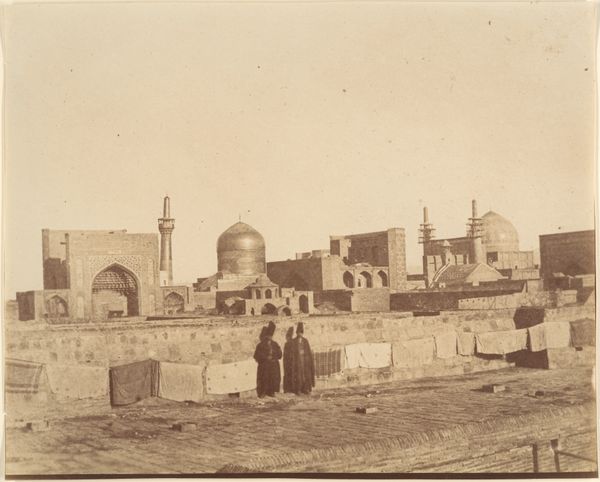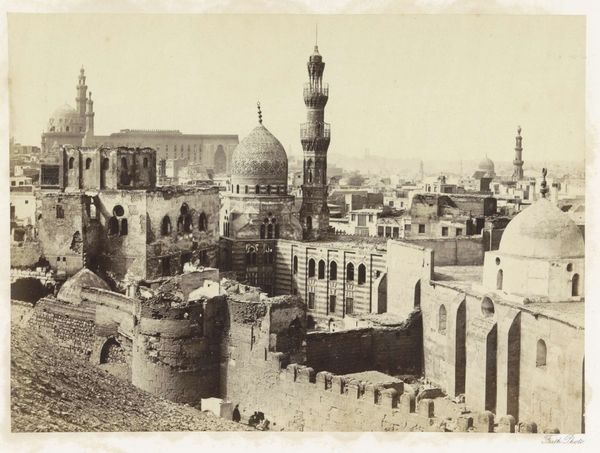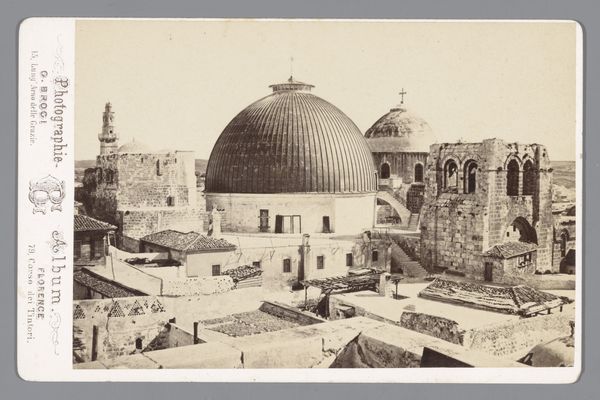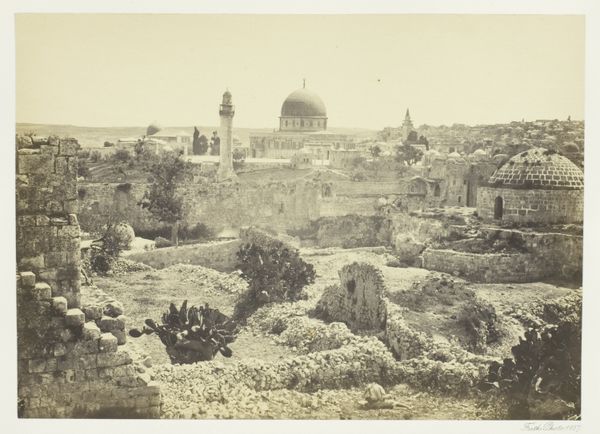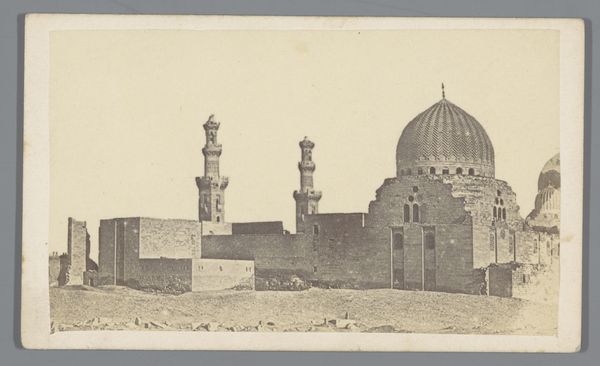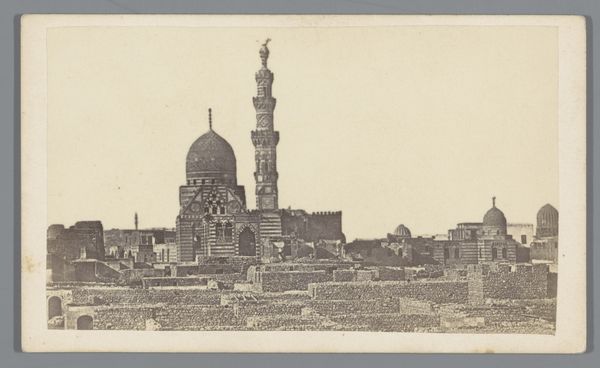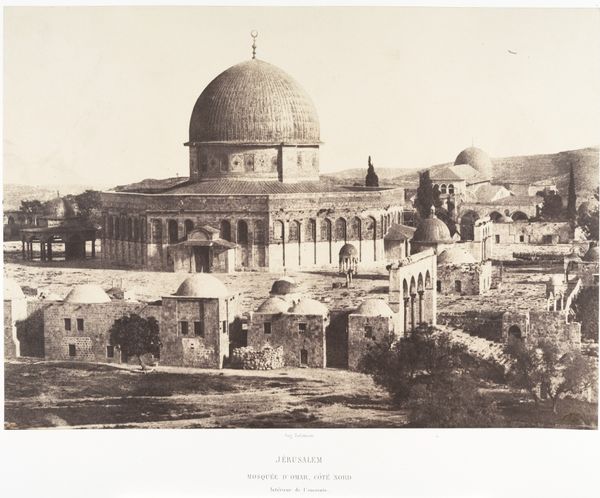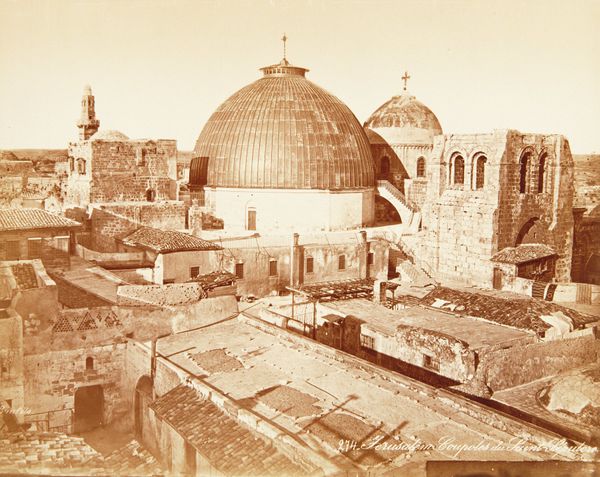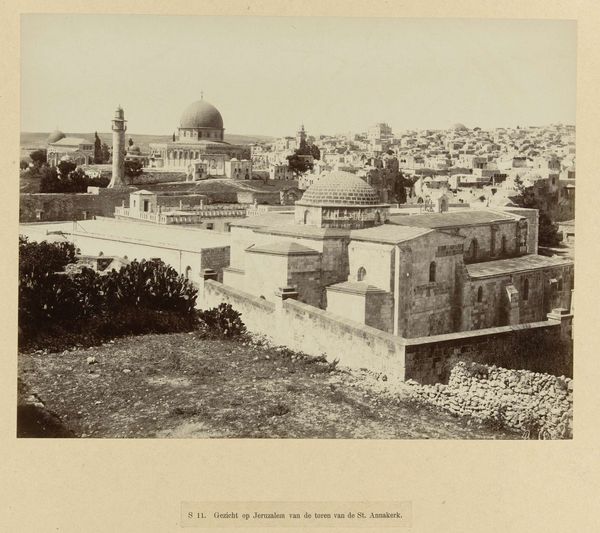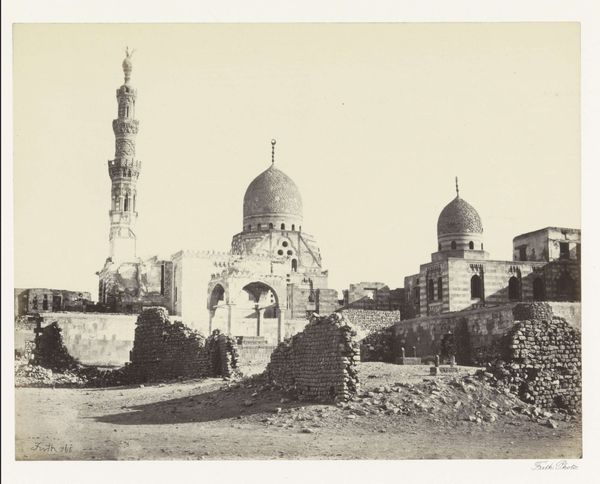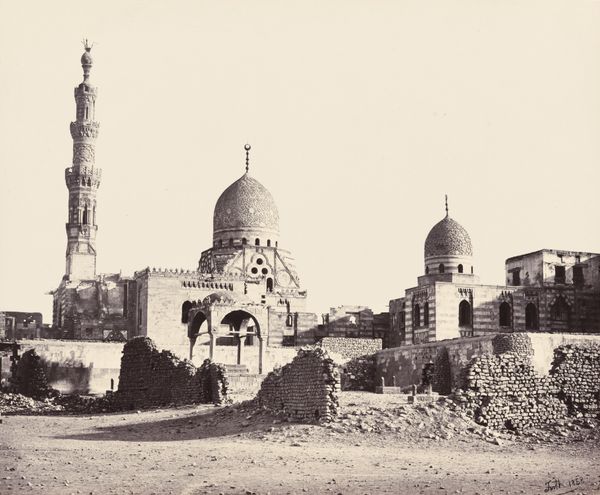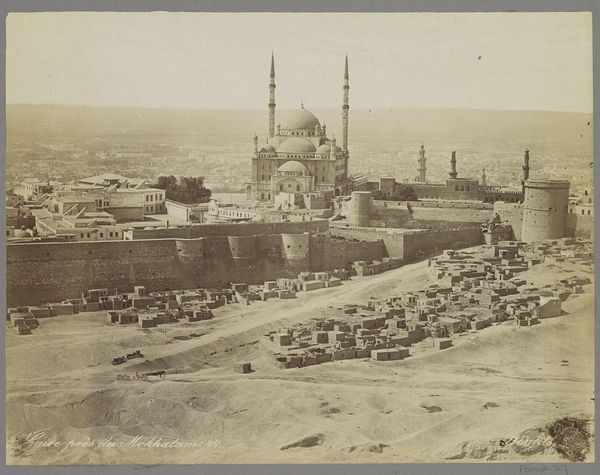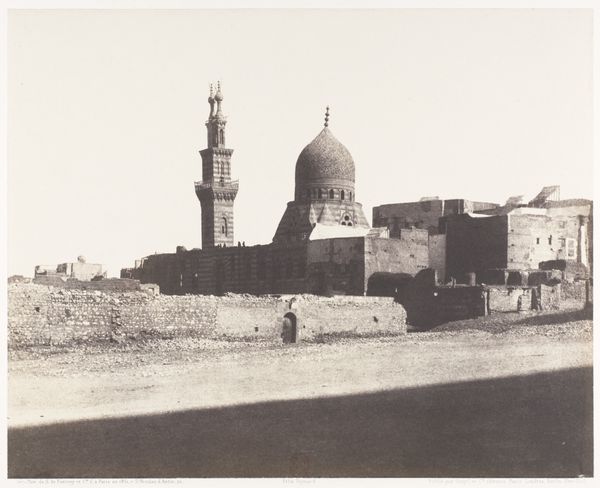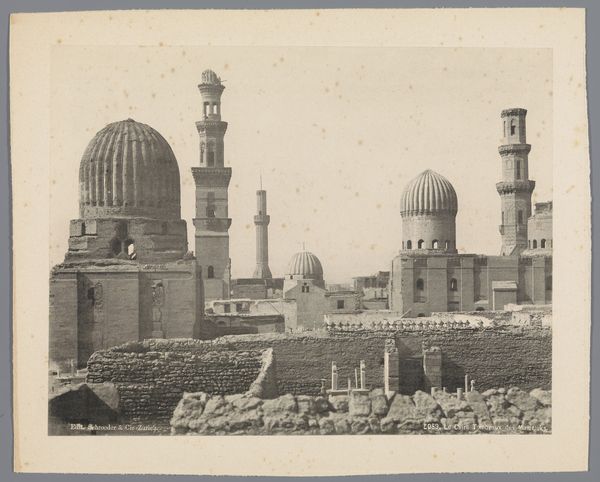![[Dome of the Holy Sepulchre, Jerusalem] by John Anthony](/_next/image?url=https%3A%2F%2Fd2w8kbdekdi1gv.cloudfront.net%2FeyJidWNrZXQiOiAiYXJ0ZXJhLWltYWdlcy1idWNrZXQiLCAia2V5IjogImFydHdvcmtzLzY5ZTk5MWEwLTU0ZTktNGE1Yy1hNzkwLTc5ZTY2NjBmMmRiMC82OWU5OTFhMC01NGU5LTRhNWMtYTc5MC03OWU2NjYwZjJkYjBfZnVsbC5qcGciLCAiZWRpdHMiOiB7InJlc2l6ZSI6IHsid2lkdGgiOiAxOTIwLCAiaGVpZ2h0IjogMTkyMCwgImZpdCI6ICJpbnNpZGUifX19&w=3840&q=75)
photography, albumen-print, architecture
#
landscape
#
photography
#
ancient-mediterranean
#
orientalism
#
albumen-print
#
architecture
Dimensions: Image: 13.9 x 17 cm (5 1/2 x 6 11/16 in.) Mount: 27.7 x 37.3 cm (10 7/8 x 14 11/16 in.)
Copyright: Public Domain
Editor: This albumen print captures the Dome of the Holy Sepulchre in Jerusalem, sometime in the 1860s. I'm struck by the density of the built environment, the way the architecture seems to be stacked and layered. What do you see in this photograph? Curator: I see a complex layering of materiality. We're not just looking at architecture; we're looking at the photographic process itself. The albumen print, a product of its time, involved a laborious process of coating paper with egg whites and light-sensitive chemicals. The act of creating this image – the labor involved in obtaining the materials, transporting equipment, and producing the print – speaks to a European fascination with, and perhaps appropriation of, the "Orient." Editor: So, you’re focusing on the actual materials and production rather than just the subject? Curator: Precisely. The crumbling stone and mortar of the Sepulchre become secondary to the photographic object itself. The “orientalist” aesthetic is achieved through a very specific industrial and economic framework that connected Europe to Jerusalem through trade, tourism and access to particular materials that constituted the final ‘work’. Think about where the materials for albumen printing were sourced, how they were processed, and the systems of labor and commerce that supported this kind of image-making. Editor: That’s a different perspective than I expected! So the social and economic conditions are as important as the image itself? Curator: Absolutely. It compels us to investigate photography not merely as representation, but as a material process deeply entwined with colonial power structures and a specific marketplace. What survives is a commodified vision dependent on access and labour, reframing the Sepulchre as a byproduct of that complex process. Editor: I never thought of it that way, considering how the production influenced our view of a holy site like this. Thanks! Curator: The lens becomes another tool, processing cultural value in tangible forms. There is always an imprint of culture within that creative materiality.
Comments
No comments
Be the first to comment and join the conversation on the ultimate creative platform.
